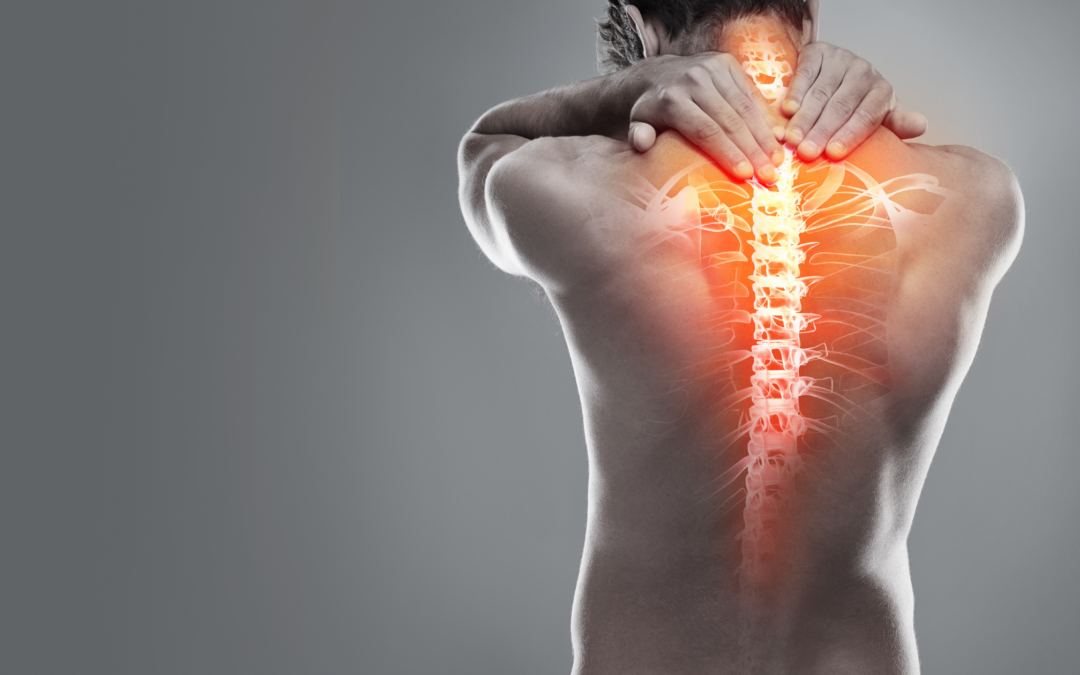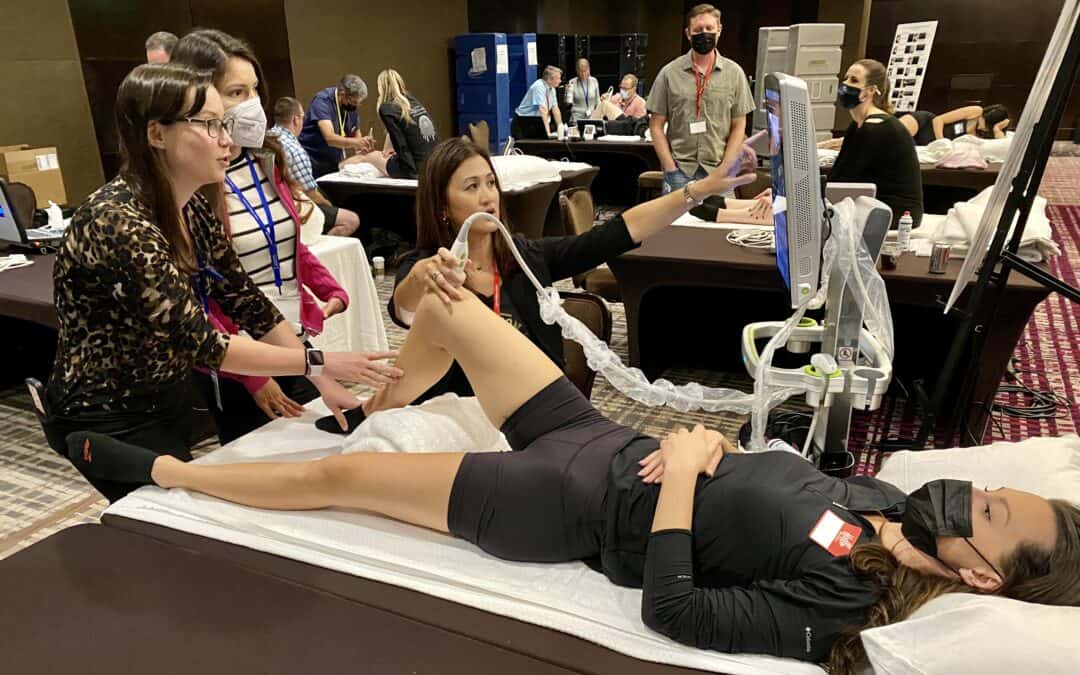
Apr 19, 2024
Join Dr. Choll Kim from Excel Spine and Dr. Chris Rogers from San Diego Orthobiologics Medical Group as they chat golf and back pain. Chances are, your back isn’t messing up your swing – it’s golf that’s messing with your back.
Golfing strains your back in unnatural ways. A golf swing using all the inner core muscles, compresses the spine disc and joints. The discs, joints, and ligaments in your back are meant to give you stable motion, but if the motion is disrupted, pain occurs.
Watch the full video HERE

Apr 18, 2023
Dr. Mary A. Ambach was invited to give a lecture by the American Academy of Orthopedic Medicine. She talked about How to Navigate the Use Of Orthobiologics for Low Back Pain. She presented on the use of Platelet Rich Plasma (PRP) and Bone marrow concentrate (BMAC) to treat Lumbar spine conditions. She also talked about the current scientific evidence on the use of stem cells to treat degenerative disc disease, facet joint arthritis, nerve pain, and other spinal conditions.

Feb 20, 2023
Chronic pain in your body can make your life quite devastating. Conditions such as disc herniation, degenerative discs, spinal stenosis, and annular tears can cause intense pain, weakness, and discomfort to your back, thigh, legs, or buttocks.
If you suffer intense pain, you are likely searching for the best pain management solution. Spine surgery is hazardous and can cause irreversible damage to your nerves and spinal system.
The good news is that there are other effective yet minimally-invasive methods you can opt for. Epidural injections and facet joint injections are the most recommended non-surgical options for patients suffering from chronic neck and back pain.
What are Epidural Injections?
Epidural injections are used globally to manage neck and back pain. Traditionally, the physician recommends the treatment for managing neck, back, leg, or arm pain caused by conditions such as:
- Disc herniation
- Annular tear
- Degenerative changes
- Spinal stenosis
The injections contain a potent corticosteroid that has powerful anti-inflammatory properties. The injection can reduce swelling and inflammation. Consequently, the drug relieves local and referred pain. Platelet-rich plasma can also be injected in the epidural space for long term pain relief.
Additionally, epidural injections can be useful in identifying the root cause of pain. A specialist precisely injects around a nerve root or nerve and discovers the exact point of injury or inflammation.
What are Facet Joint Injections?
The facet joints are small joints located in the spine. The primary role of these joints is to allow your spine to move or twist.
Facet joint injections’ main role is to deliver anesthetic or steroids medications to these small joints. Platelet-rich plasma can also be injected into the facet joints to decrease inflammation.
A physician uses these types of injections for therapeutic and diagnostic reasons to manage pain resulting from arthritic or degenerative conditions on the facet joints. In most cases, facet joint injections are indicated in the following conditions:
- Arthritis affecting the facet joints
- Localized neck or back pain
What is the Difference Between Epidural Injections and Facet Joint Injections?
Epidural injections primarily treat pain that radiates from the spine to other parts such as the back, arm, or leg. It is useful in managing pain that occurs due to a specific nerve being inflamed or pinched.
Facet joint injections, on the other hand, treat pain around the facet joints. Mainly the injections are indicated for patients with pain that occurs due to arthritis conditions, or injury to the facet joints.
Both of these injections are done using X-ray guidance and performed with local anesthesia.
Book an Appointment at SDOMG
Don’t let chronic pain make your life miserable. We have specialists with vast experience in epidural injections and facet joint injections. The non-surgical methods are the most recommended in managing chronic back, or neck pain. Contact us to book an appointment with our specialists.

Mar 18, 2022
Chronic back pain is common. So common that many of us just grin and bear it. We write it off as old age or bad posture.
Lower back pain reveals itself in many ways. It can be a deep, dull ache in your lower back. Or it can feel like tightness and spasms in and around that area. It can also be a stinging pain or accompanied by numbness or tingling in your legs or feet. No matter how it feels for you, lower back pain hurts.
7 Facts About Chronic Back Pain
1) There are several causes…
There are several causes of back pain. Some are minor and temporary, but others show a more serious, long-term problem. Causes can include:
- Muscle and ligament strain
- Bulging disks
- Arthritis
- Osteoporosis
- Sacroiliac joint inflammation
- Infection
- Tumors
If you’re unsure of the cause of your back pain, it’s important to find the right diagnosis. This will let you and your care team know which treatment will work best for you.
2) … and a lot of risk factors
While many of us can, and will, develop lower back pain, there are some risk factors we can avoid to lessen the likelihood or severity of the disorder. These risk factors include:
- Lifting objects incorrectly can cause strain on your lower back
- Lack of exercise weakens the muscles in your abdomen and back
- Being overweight adds extra stress to your back
- Mental health issues like depression and anxiety are linked to a higher risk for lower back pain
- Smoking can decrease blood flow to the spine as well as increase coughing, which strains the lower back
3) You can avoid little triggers
We can make several slight changes to ease the strain on our lower backs. They may seem like minor changes, but their benefits add up.
- Use a chair with good lower back support
- Arrange your monitor, keyboard, and other office equipment directly in front of you so you’re not twisting or sitting at an angle
- Take a 20 second break to stand up and stretch every 10 minutes to loosen up your joints and muscles
- Avoid tight clothing such as jeans that are too tight which can get in the way of moving, sitting, and bending normally
- Ditch those high heels for a heel that’s an inch or less. This keeps your center of gravity where it should be and avoids your body from compensating
4) You’re not alone
The Mayo Clinic reports that within the past three months, 1 out of 4 adults have reported experiencing back pain. More than that, over 80% of us will experience lower back pain in our lives. It’s also the second most common reason people have for visiting their doctor.
That’s a lot of people struggling with pain. Suffering from lower back pain can feel isolating, so it’s worth remembering that you’re not alone. Reach out to your doctor or look for support groups in your area to find that bit of extra support from those who understand your pain.
5) Be careful of opioids
It’s all too easy to rely on medication to treat lower back pain. However, pain relief pills, especially opioids, only treat the symptom and not the cause. Opioids include oxycodone, codeine, hydrocodone, and morphine. Using and abusing opioids often leads to addiction problems and sometimes even fatal overdoses.
If you find yourself struggling to manage your opioid medications or feel that you depend on them, reach out to your doctor or other health care professional for more information and advice.
6) There are a range of treatments available
There are several treatment options available besides medications which include:
- Physical therapy and conditioning exercise programs
- Weight loss
- Proper footwear
- Epidural Steroid Injections
- Facet Joint Injections
- Sacroiliac joint Injections
- Trigger Point Injections
- Platelet Rich Plasma Therapy (PRP) injections
- Prolotherapy injections
7) SDOMG can help
At San Diego Orthobiologics Medical Group, we offer a range of treatments, including the procedures listed above. We also offer medication management and education. Our focus is on interventional pain procedures as well as medication support to help control and relieve pain. Get in touch today, using the form below:

Aug 2, 2021
Dr. Mary Ambach lectures to physicians, orthopedic surgeons and other orthopedic practitioners on the use of Platelet Rich Plasma and Stem Cell Therapies for the Spine.
Dr. Ambach is one of the esteemed instructors in this Orthobiologic seminar who taught physicians on how to perform regenerative injections and diagnostic musculoskeletal ultrasound scans.
Dr. Ambach has served as faculty and speaker at regenerative conferences in and outside of the country. She has mentored many doctors all over the world in innovative procedures using cell therapies from our own bodies to heal our own orthopedic injuries.

May 28, 2021
More than 80 percent of adults will experience lower back pain at some point in their lives.1 It is the single most common cause of disability worldwide 2 and the second most common cause of adult disability in the United States. 3
Most cases of lower back pain have a benign clinical course which resolves with conservative care such as rest, activity modification, anti-inflammatories, heat or ice therapy, and physical therapy. Some, however, will develop chronic low back pain or pain that lasts for 3 months or longer.
Common Causes of Chronic Lower Back Pain
- Arthritis. Osteoarthritis of the spine is a condition where there is degeneration of the joints, discs, and bones in the spine as people age. Arthritis can lead to bone spurs which result in the narrowing of the space around the spinal nerves and spinal cord, a condition called spinal stenosis.
- Facet joint dysfunction: This occurs when the facet joints, the small joints that connect the individual bones in the spinal column, get inflamed or when the cartilage in the joints becomes injured or worn out. They can also get out of normal alignment, a condition called spondylolisthesis.
- Bulging or Ruptured Disc: The discs are soft, gel-filled structures that act as a cushion or shock absorbers between the vertebral bones in your spine. When these discs become injured, they can bulge out and can put pressure on neighboring nerves causing pain. As people age, discs lose their hydration and wear down leading to degeneration. Degenerative discs can develop tears and collapse which causes low back pain, muscle spasm, or spinal stenosis.
Other less common causes of low back pain include spinal cord problems, scoliosis, fracture, and non-spine sources like tumors and kidney stones. It is important that your physician perform a comprehensive evaluation of your medical history and physical examination to give you an appropriate diagnosis for your back pain.
Alternative Treatments
Patients who have failed standard treatments or are seeking alternatives to spine surgery for back pain should consider Regenerative therapies. These advanced treatments involve the use of your own cells to help your body heal faster. They avoid the risks and long-term complications associated with surgery and reduce pain to help you maintain an active lifestyle. Read about these regenerative treatment solutions here.
Sources:
- Sauver, JL et al. Why patients visit their doctors: Assessing the most prevalent conditions in a defined American population. Mayo Clinic Proceedings, Volume 88, Issue 1, 56–67.
- Hoy D, March L, Brooks P, et al The global burden of low back pain: estimates from the Global Burden of Disease 2010 study Annals of the Rheumatic Diseases Published Online First: 24 March 2014. doi: 10.1136/annrheumdis-2013-204428
- From the Centers for Disease Control and Prevention, Prevalence of disabilities and associated health conditions among adults—United States, 1999. JAMA 2001;285 (12) 1571- 1572





